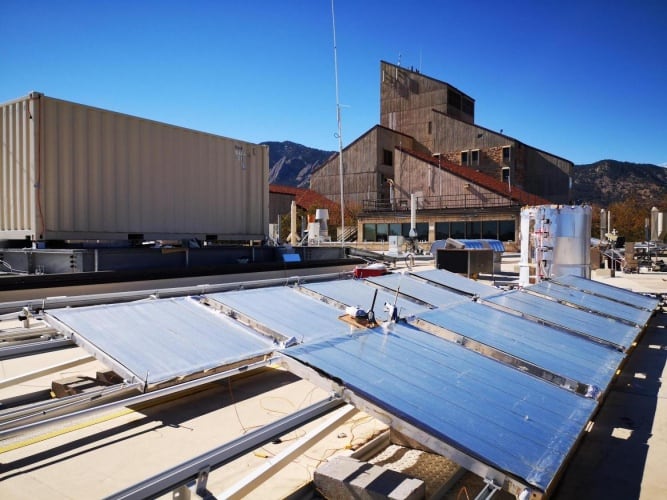
The glass-polymer hybrid metamaterial, which first appeared in the journal Science in 2017, was developed by engineers at the University of Colorado Boulder (CU Boulder). Working with colleagues from the University of Wyoming, the technology has now been built out into a functioning cooling system for buildings. The technology, which takes advantage of radiative cooling principles, is described in the journal Joule.
“As Earth’s temperature warms due to the absorbed heat from the sunlight during the day, it continuously emits infrared light to the cold universe all the time,” said lead author Professor Ronggui Yang of CU Boulder’s Mechanical Engineering school. “During the night, Earth cools down due to the emission without the sunshine.”
Similar to this natural process, the team’ film-like material reflects almost all incoming sunlight while still allowing an object’s stored heat to escape, keeping it cooler than ambient air even in the midday sun. At noon under stationary conditions, the proprietary RadiCold module kept a container of water covered by the metamaterial 10.6°C below the ambient temperature.
“We can now apply these materials on building rooftops, and even build large-scale water cooling systems like this one with significant advantages over the conventional air conditioning systems, which require high amounts of electricity to function,” said Associate Professor Gang Tan of the University of Wyoming’s Department of Civil and Architectural Engineering.
The researchers also introduced an element of dynamic scheduling to their technology, anticipating that structures such as offices would be likely to have reduced or even zero cooling demand at night. In a building-integrated system with the cooling metamaterial, a cold storage unit could be added to capture the cold through heat transfer fluid such as water and allow it to be retrieved during the subsequent day to reduce the cooling strain during peak demand.










Comment: The UK is closer to deindustrialisation than reindustrialisation
"..have been years in the making" and are embedded in the actors - thus making it difficult for UK industry to move on and develop and apply...